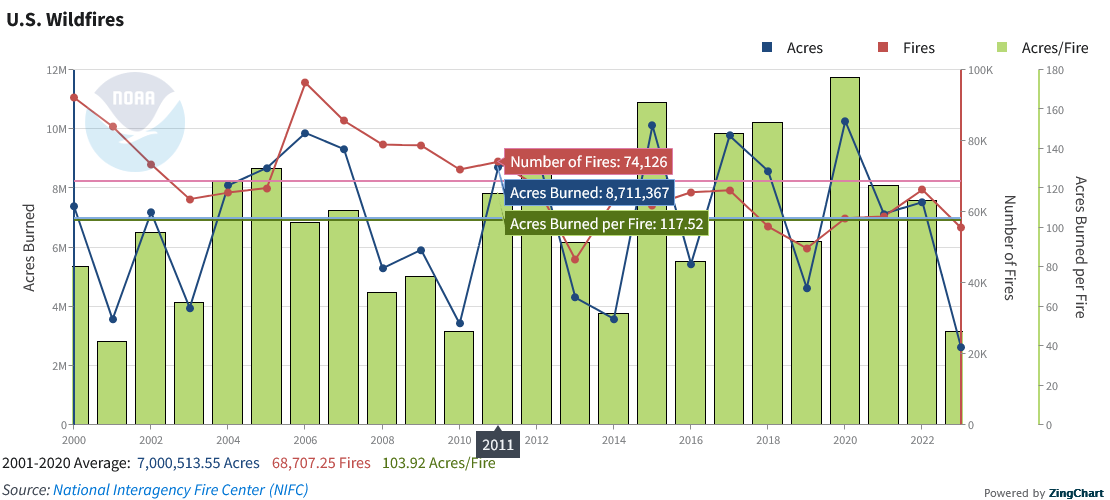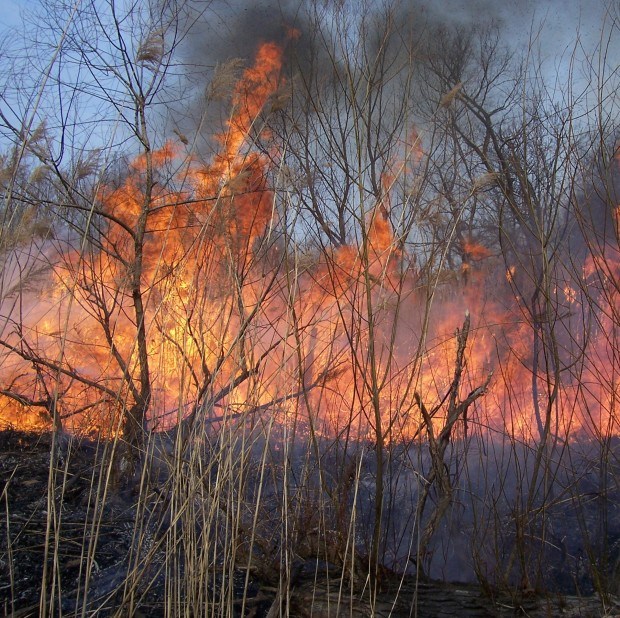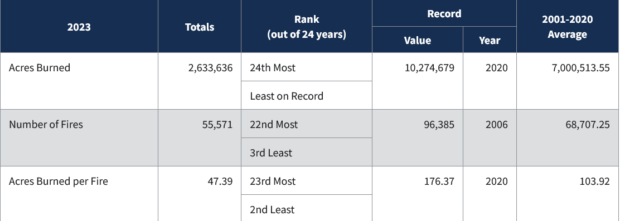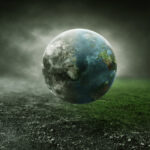Though 2023 began with nearly 50 percent drought across the U.S., combined with record-breaking temperatures later in the year, the 55,571 wildfires recorded burned just 2,633,636 acres, according to NOAA’s National Centers for Environmental Information using data from the National Interagency Fire Center.
In its annual report, the agency noted the number of wildfires in 2023 was close to the 10-year average (2013–2022) ,while the total acres burned was well below the 10-year average of 7.1 million acres.
In Alaska, the report noted that the nearly 300,000 acres burned during the 2023 fire season was less than half of the state’s seasonal average.
The reduction in wildfire potential throughout the year was likely the result of late winter and spring weather activity, including atmospheric rivers and the summer monsoon which brought above-normal precipitation to much of the western U.S., “recharging some of the major reservoirs that dropped to their lowest levels in 2022,” the report noted.
As a result, the U.S. drought footprint reached a minimum extent of 19 percent on May 30, the least area of drought seen since mid-2020.

Air quality resulting from smoke associated with the Canadian wildfires caused significant air quality issues for millions in portions of the Northeast and Great Lakes this year.
On June 7, around 100 million people across 16 states were under air quality alerts while New York City reported the worst air quality of major cities worldwide.
On June 27, Chicago reported the worst air quality of any major city in the world as wildfire smoke affected a large portion of the Midwest.





















 Report: Europe Is the Fastest-Warming Continent, at Nearly Twice the Average Global Rate
Report: Europe Is the Fastest-Warming Continent, at Nearly Twice the Average Global Rate  Personal Auto Insurance Competition Heating Up, Root Execs Say
Personal Auto Insurance Competition Heating Up, Root Execs Say  Growing Progressive Set to Hire 10,000+ in Claims, IT, Other Roles
Growing Progressive Set to Hire 10,000+ in Claims, IT, Other Roles  Progressive Gains as Drivers Shop Around for Auto Insurance—Again
Progressive Gains as Drivers Shop Around for Auto Insurance—Again 



